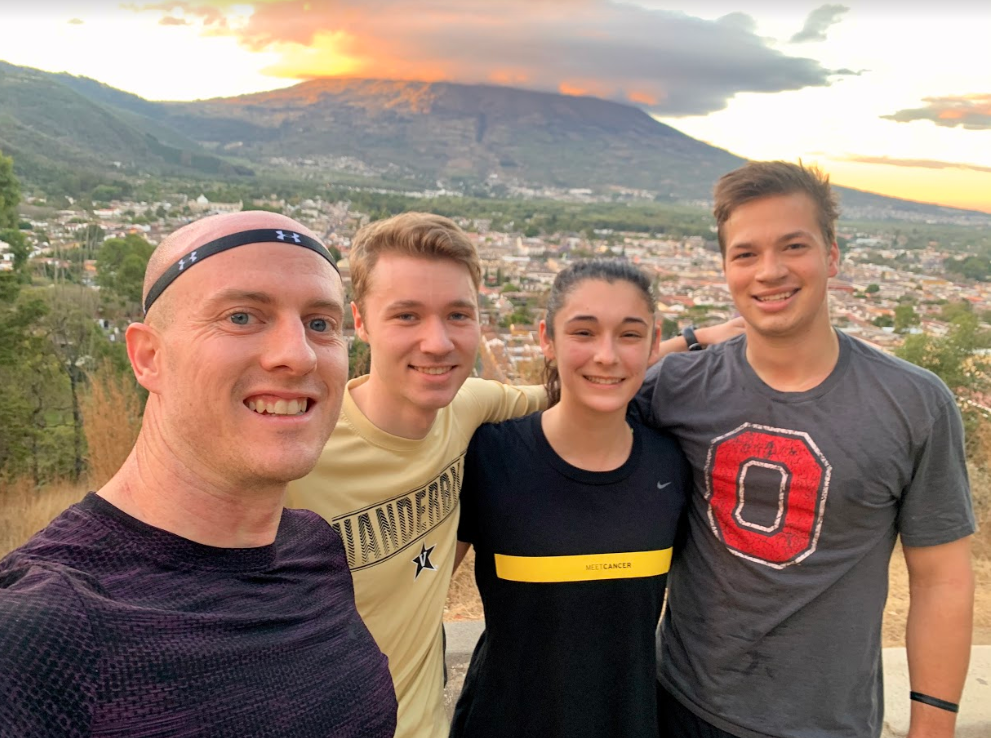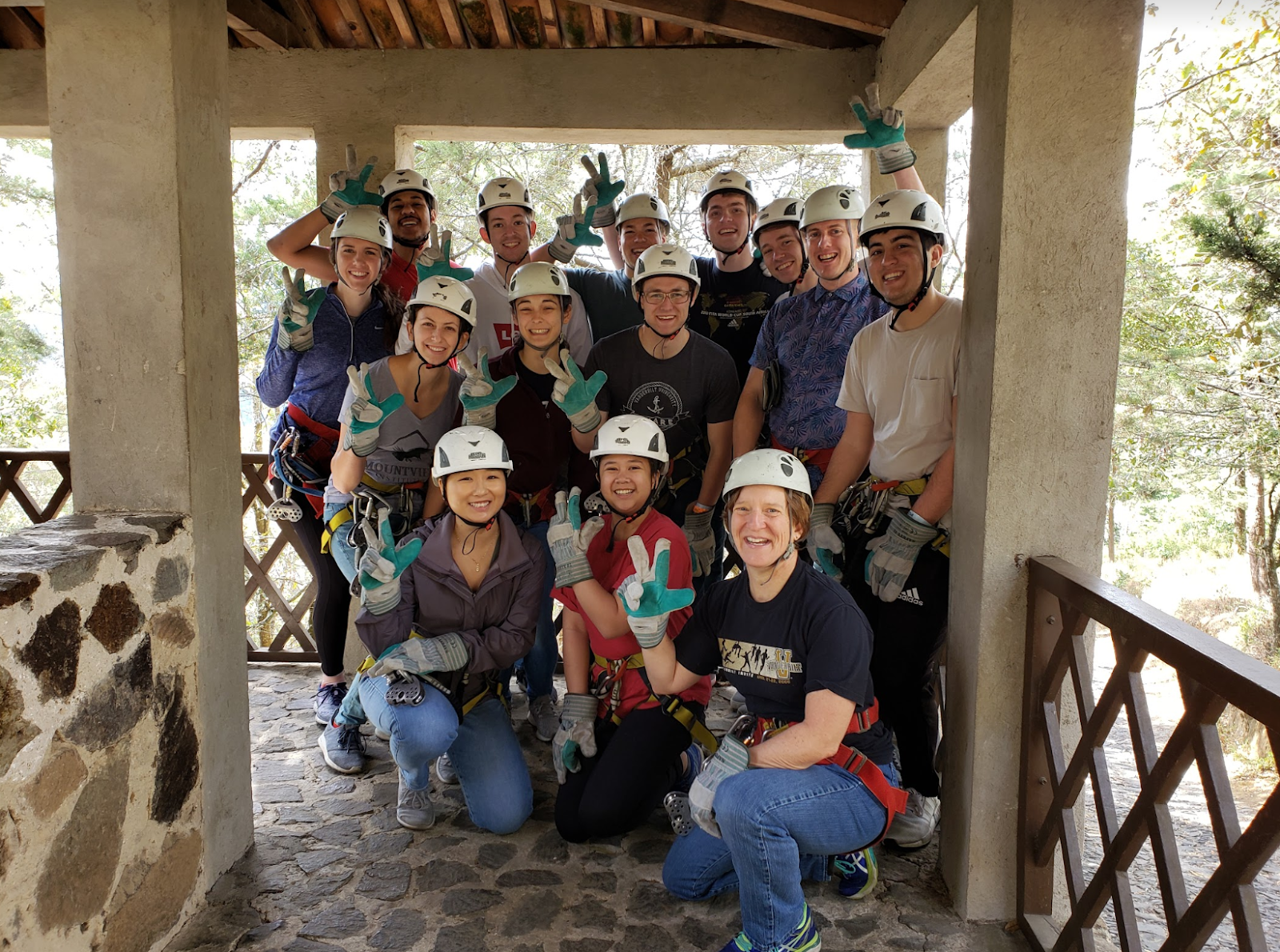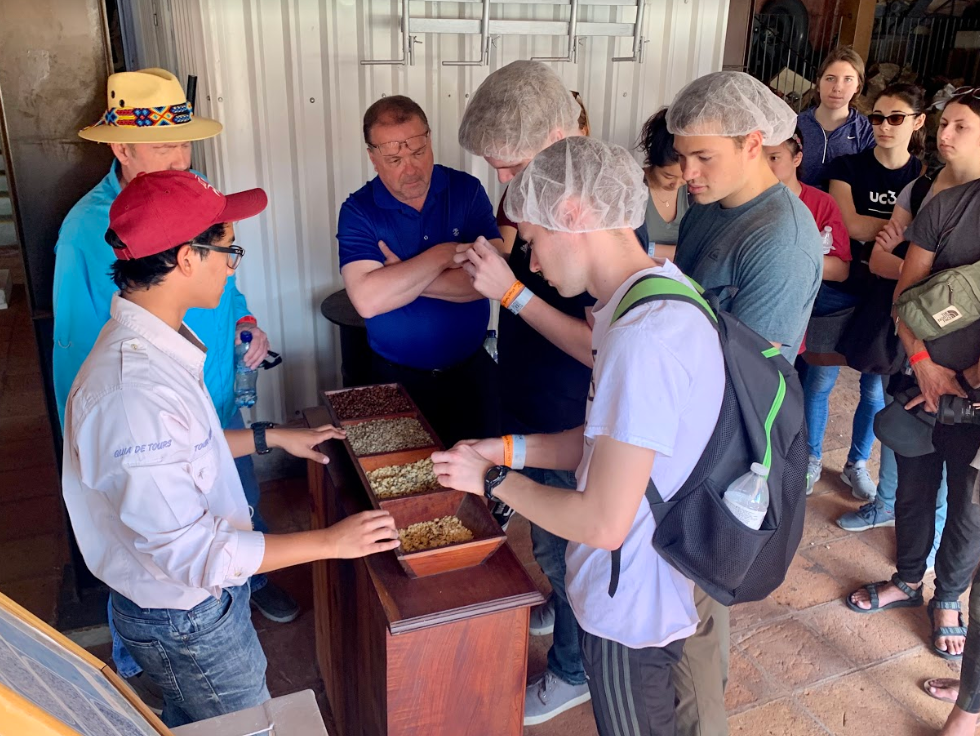 |
| Our final visit to Cerro de la Cruz |
We completed our device repair work on Friday, but the fun wasn’t over! Saturday was filled with adventure, cultural exploration, and group bonding. We started out early per usual, with some of us taking the now-habitual morning run up Cerro de la Cruz. The sunrise today was particularly stunning, with soft pinks and oranges emerging to envelop the dark volcanoes.
 |
| Climbing higher and higher! |
After breakfast, the group migrated through the city to meet a shuttle that would take us up to Finca Filadelfia, a ranch at the base of the mountains that includes a coffee plantation winding thousands of feet up the steep slopes. We were excited about our first activity: ziplining! The group packed into the open-air back of a rickety truck and began the ascent up the zigzagging bumpy dirt roads, holding onto the seats so as not to tumble into the aisles. We traversed the edges of cliffs and climbed hills so steep that we were impressed our truck held on to the road. Needless to say, the views from the drive were incredible.
Arriving at the top, we suited up in full ziplining gear and got straight to the action. Stephanie impressed us with the versatility of her tricks, including hanging upside-down like Spiderman, while Dr. Adams made us laugh with his Lotus and dad-on-a-beach-chair poses. We zipped through seven lines, the sixth of which launched us out over a valley for a prolonged and relaxing view of the landscape. At the end of the tour, several of us attempted to walk a tightrope in the kids’ course (with varying levels of success). After covering significant ground on the ziplines, it was only a short drive back down to our next stop: the coffee plantation!
 |
| The VU team all geared up! |
 |
| Rhett performing the Spiderman |
 |
| Antonio ready to launch backwards |
 |
| Mission accomplished! |
The Guatemalans know their coffee, and they were happy to share what they knew with Americans. Similarly, we loved learning about the intricate process of coffee bean cultivation and preparation. We followed our guide from the coffee plant nursery to the coffee lots where the sweet red coffee cherries are picked each individually. From the plots outside, we moved into buildings that housed the machines used to extract the husks and separate perfect beans from those with defects. Finally, we observed the drying process and were able to try a delicious cup of their fresh coffee to complete our tour.
 |
| Dr. Adams examining the coffee cherries |
 |
| Learning to shell the beans in the coffee factory |
Finishing the coffee tour and lunch, we seized the opportunity to peruse the local Artisan Markets before leaving Antigua for Guatemala City! The bright colors of the clothing and fabrics popped as we walked from one stall to the next. We searched for gifts and trinkets at the market, each person trying to one-up the next’s haggling skills. Wandering around the massive outdoor market, we walked from the artisan area to where vendors were selling produce, shoes, and electronics to the locals. Exhausted but content with our day of bargaining, we headed back to Casa Mia Hotel with our catch to recuperate before dinner.
For dinner, Dr. P directed us to Miso, a nearby Korean restaurant renowned for its traditional meals. While the dinner was delicious, the focus of this last dinner was on reflection and conversation over the trip. We compared our current thoughts and comfortability with medical equipment with our previous thoughts and experience to note the difference between the two. We shared stories and insights about people we did not know well before the trip and thought about the value we added in Guatemala through our service.
Although dinner ended and we headed back to our hotel to gather our things, the conversations and stories were just getting started! Dr. Adams shared his travel stories involving shady, under-the-table deals at hotels while Noah enthusiastically told us a story about pulling a prank on his girlfriend that got him dumped. The stories continued all the way back to Guatemala City, followed us into Casa del Angel Hotel where this trip started, and sparked laughter and smiles among all of us. After hours of stories and games, we headed to bed to prepare for the flights back tomorrow.